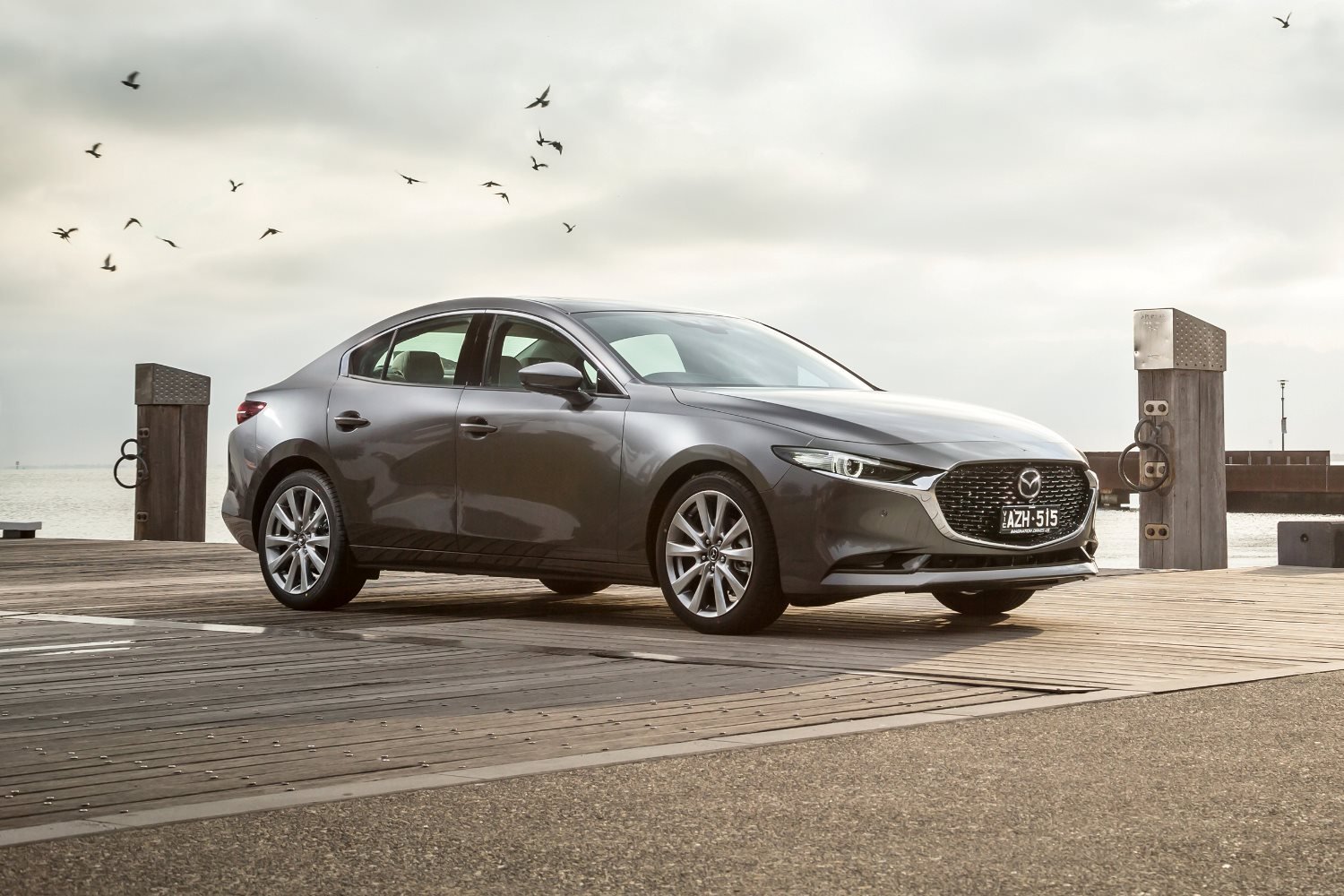Things we like
- Quality fit and finish around cabin
- No less attractive than the hatch
- Has greater practicality
Not so much
- Base engine is lack lustre
- Premium grade models are expensive
- Six-speed automatic is getting long in the tooth
The Wheels Verdict: The sedan is every bit as good as the hatch, with little difference splitting the pair; if carrying an extra passenger or two is on the cards, the sedan will serve you better.
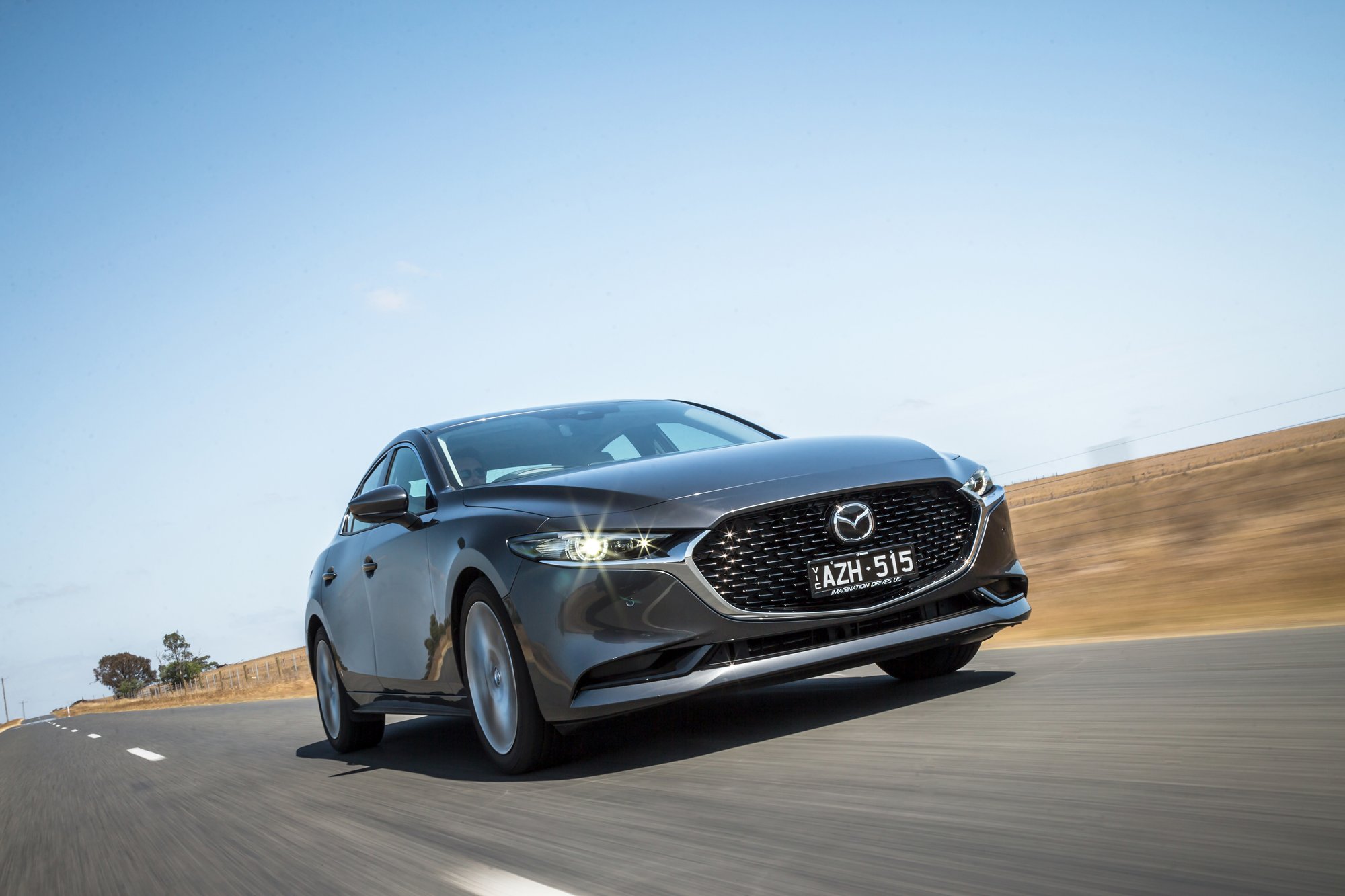
WHAT IS THE MAZDA3 SEDAN?
Mazda’s little 3 is a huge seller in the Australian market and while the hatchback claims the highest percentage of sales in the Mazda3 range, the new sedan delivers improvements in some areas that may make it a better option for some buyers.
WHY WE’RE TESTING IT
As one of Australia’s most popular models on the market, we’re keen to see what the new sedan delivers and find out if it loses any of the goodness found in its hatchback sibling.
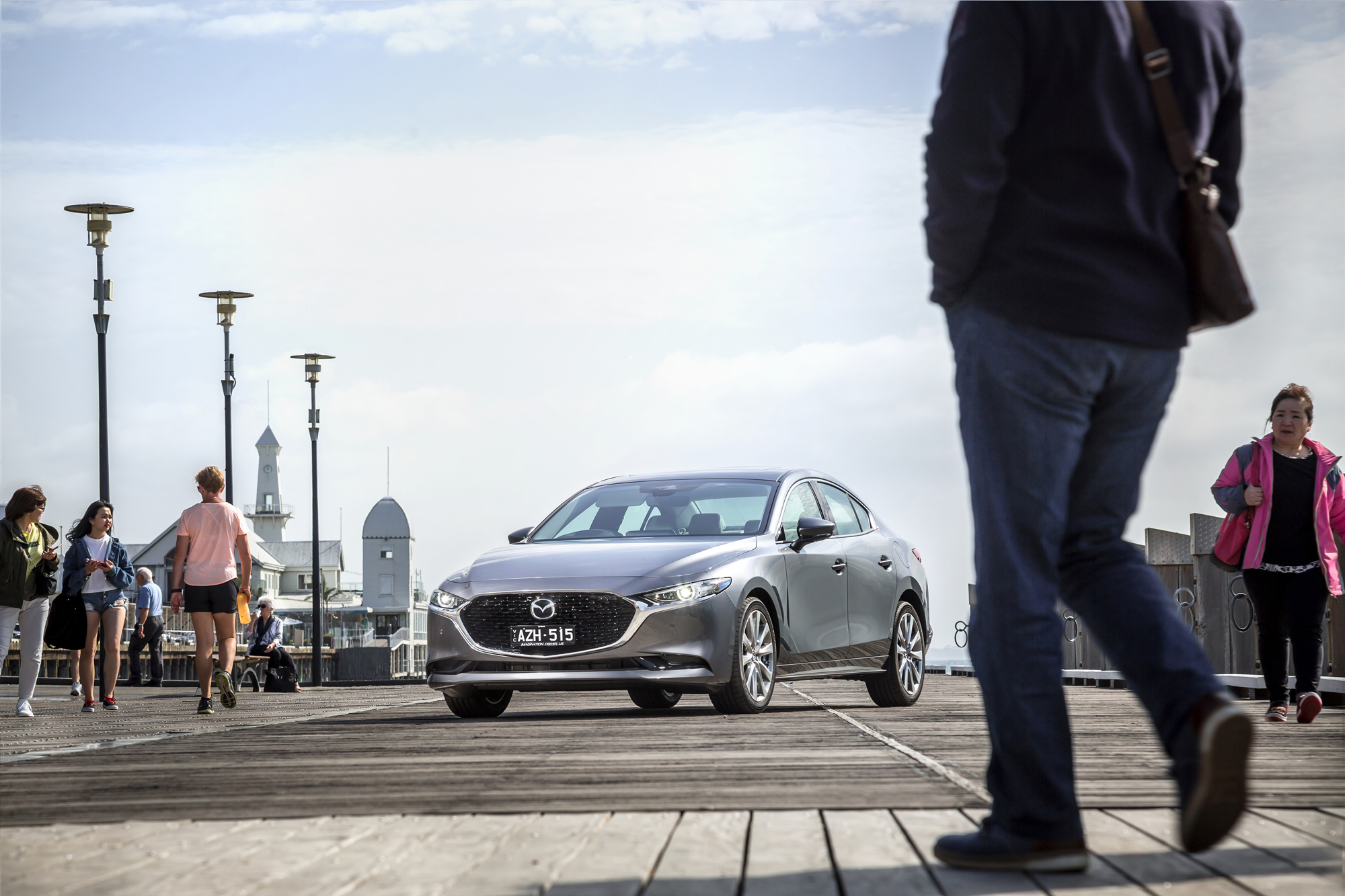
2019 MAZDA 3 SEDAN REVIEW
Greater differentiation between body styles than in any previous generation” That’s the core theme that Mazda’s designers want us to know about the fourth-generation 3.
In simple terms, previous sedan iterations of Mazda’s big-selling small car have been more of a boot-replaces-hatch design exercise, but this time around, the two variants take far more divergent paths. A significant driver of this strategy is obviously global tastes. Large markets such as China and North America favour C-segment sedans over hatches, whereas Australia is more in step with Europe, where the hatch takes the greater volume.
The split here has consistently been around 60/40 in favour of the hatch, so who’s buying the sedan? According to Mazda Australia, sedan buyers tend to be male, but that about where the demographic profiling starts and stops.
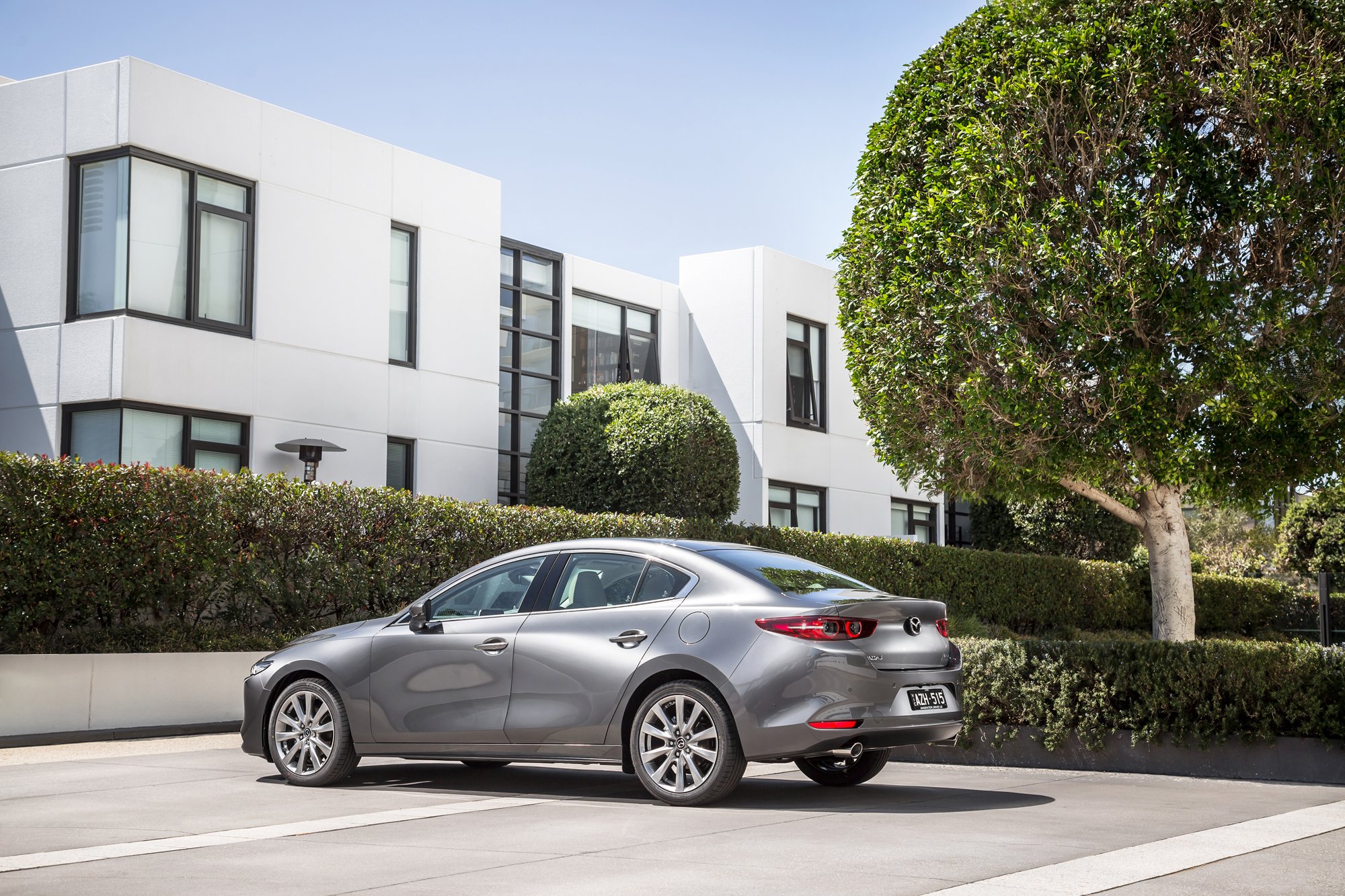
So should you consider the sedan?
Well, for starters it does offer some packaging advantages over the hatch, and it costs no more. All five spec levels are offered across both body styles, as are engine and transmission combinations. About the only trim difference to note is that the top-spec G25 Astina sedan is available with white leather, whereas the equivalent hatch is offered with the option of red. That’s it.
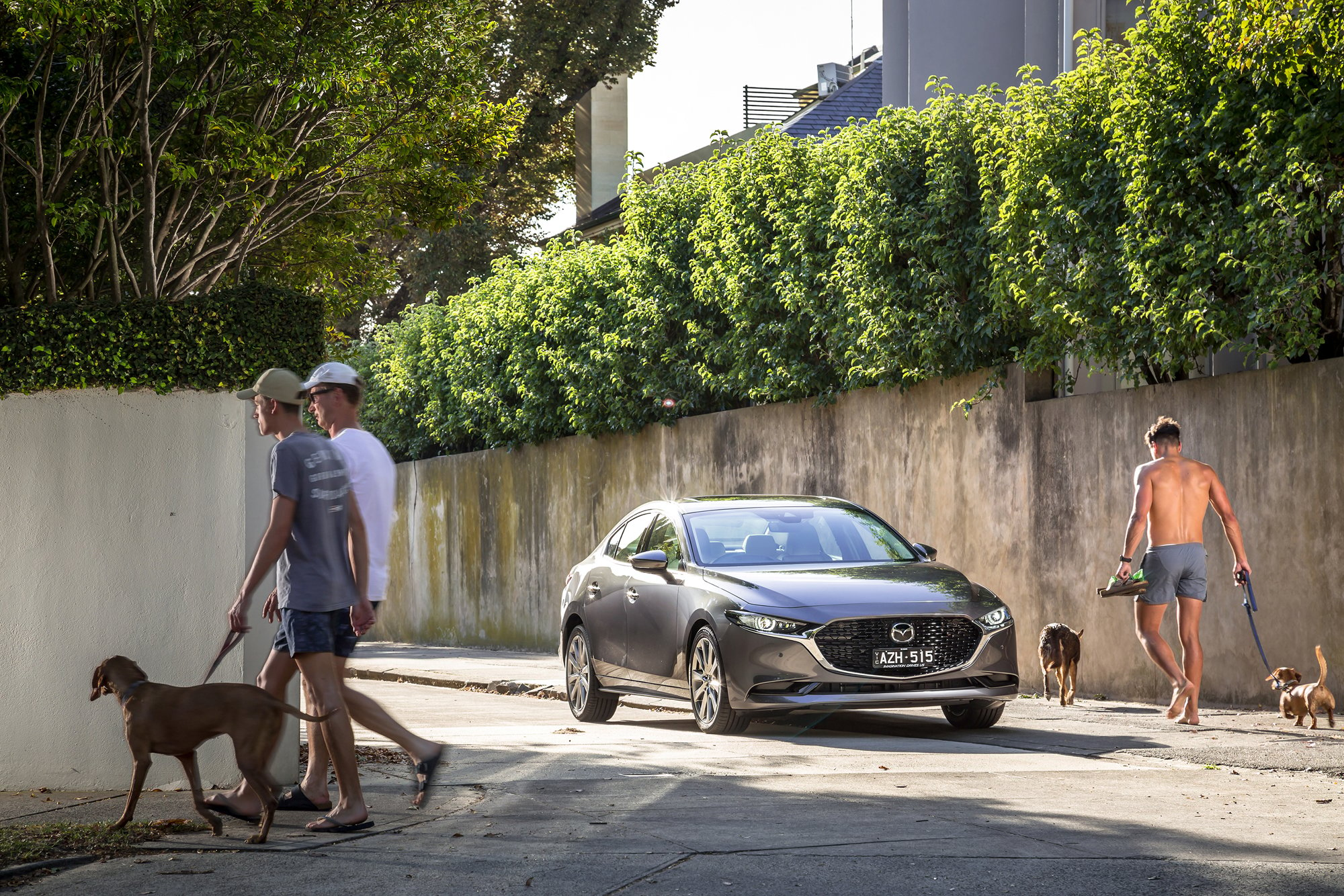
What is instantly evident when you view the pair side by side is the dimensional differences.
The sedan is on the same wheelbase as the hatch – 2725mm – but is 20mm longer, and this translates to increased legroom and greater boot space. The latter jumps from 295 litres for the hatch to a sizeable 444L in the sedan, and while the loading aperture is obviously smaller than that of the hatch, this difference is appreciable.
As is the increase in both rear legroom and headroom. The gains may be small, but they are noticeable, and both are factors to consider if you regularly carry adults in the second row. But even kids may notice the difference, as the sedan’s slightly lower beltline brings the glasshouse down a little, making for a more airy ambience for short passengers in the back.
Otherwise, the front seats are mounted in the same position and the interior of each body style is identical.
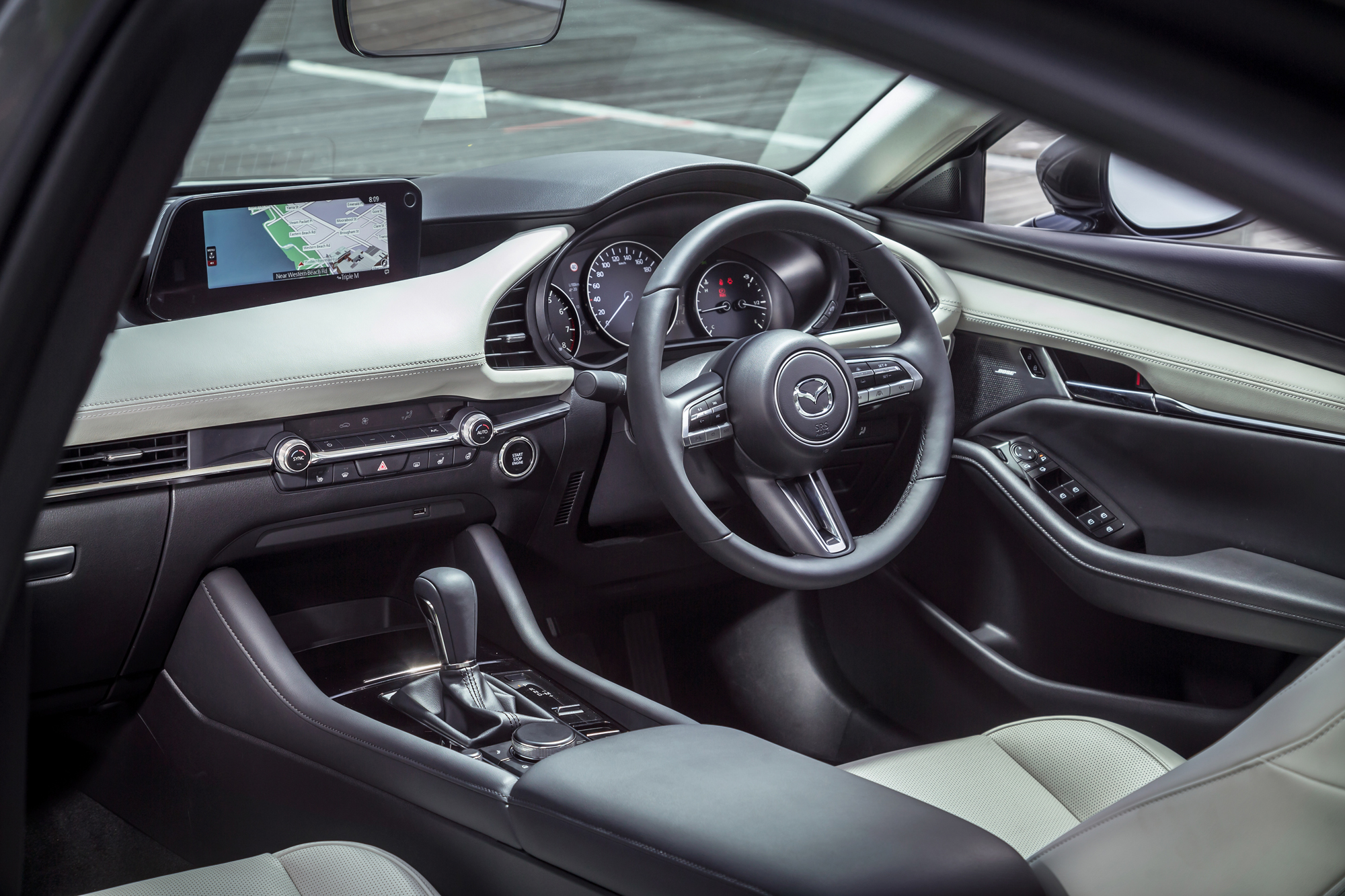
There’s also no discernible difference in the way the two variants drive. We sampled the G20 Evolve, one rung up from the entry-level Pure specification, and were no less impressed than we have been with the high-spec models.
The cloth trim is simple but understated and attractive, the seats well-contoured and supportive, while touchpoints, material quality and fit and finish all continue the well-crafted attention to detail established further up the range.
The infotainment system is also shared with upper-spec models, and benefits from a wider aspect ratio than in the outgoing car, slicker software interface, wonderfully tactile rotary and toggle-switch controller on the centre console and Apple CarPlay and Google Android Auto phone connectivity.
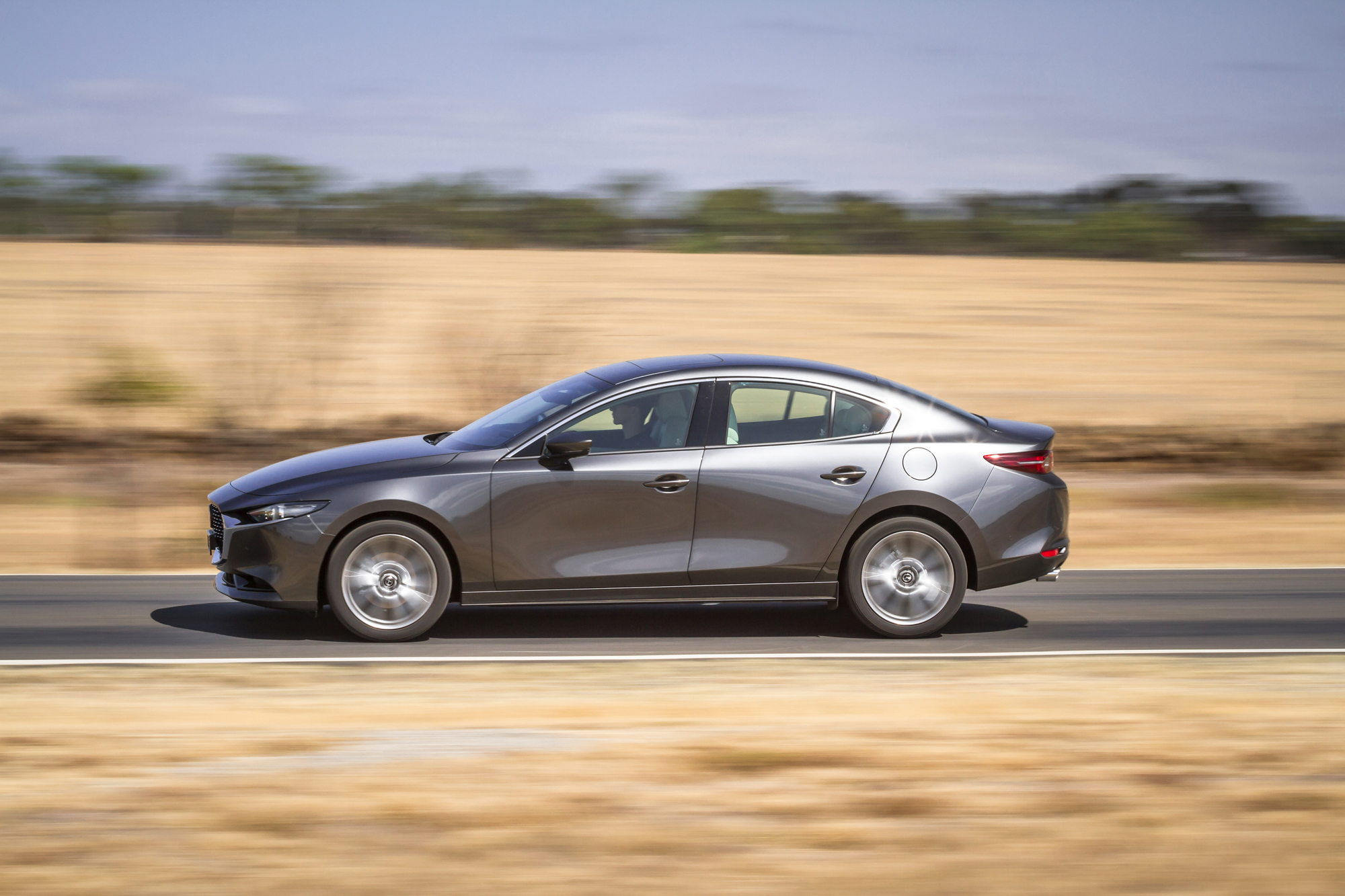
The G20 designation indicates power comes via Mazda’s 2.0-litre naturally-aspirated engine, largely carried over from the third-gen model with just a few tweaks for improved efficiency.
Its outputs of 114kW at 6000rpm and 200Nm at 4000rpm are sent through your choice of a six-speed automatic or manual transmission.
We drove the auto; performance is adequate rather than effortless, and frequent kickdown is needed when you want to get moving quickly, but it’s a sweet-revving unit and excellent insulation means engine noise is not intrusive. Keener drivers may appreciate the G25 models that gain a larger 2.5-litre four-pot, or consider the all-new Skyactiv-X engine that will be the model’s hottest mill when it arrives in December.

MAZDA3 SEDAN VS RIVALS
MAZDA3 SEDAN PRICE AND SPECS AUSTRALIA
- Model: Mazda3 G20 Evolve sedan (tested)
- Engine: 2.0-litre four-cylinder petrol
- Max power: 114kW at 60000rpm
- Max torque: 200Nm at 4000rpm
- Transmission: Six-speed automatic
- Economy: 6.1L/100km
- Price: $27,690
- On sale: Now
Things we like
- Quality fit and finish around cabin
- No less attractive than the hatch
- Has greater practicality
Not so much
- Base engine is lack lustre
- Premium grade models are expensive
- Six-speed automatic is getting long in the tooth

